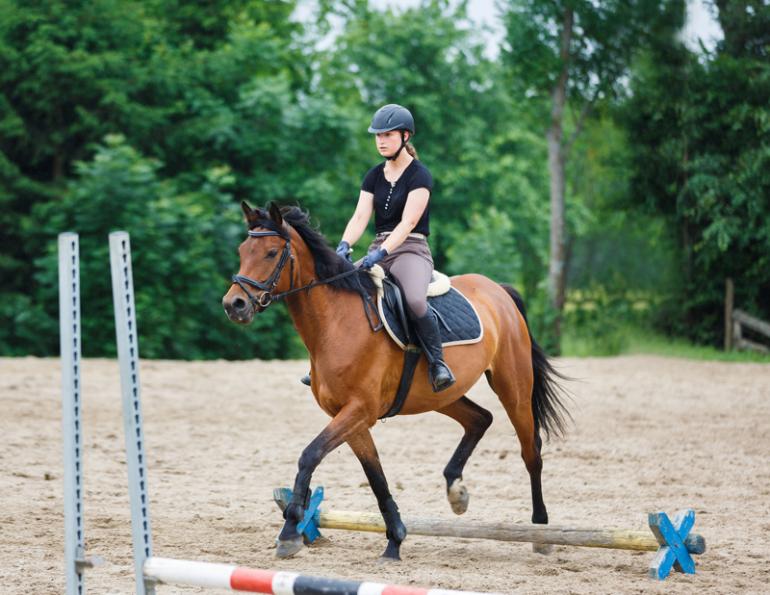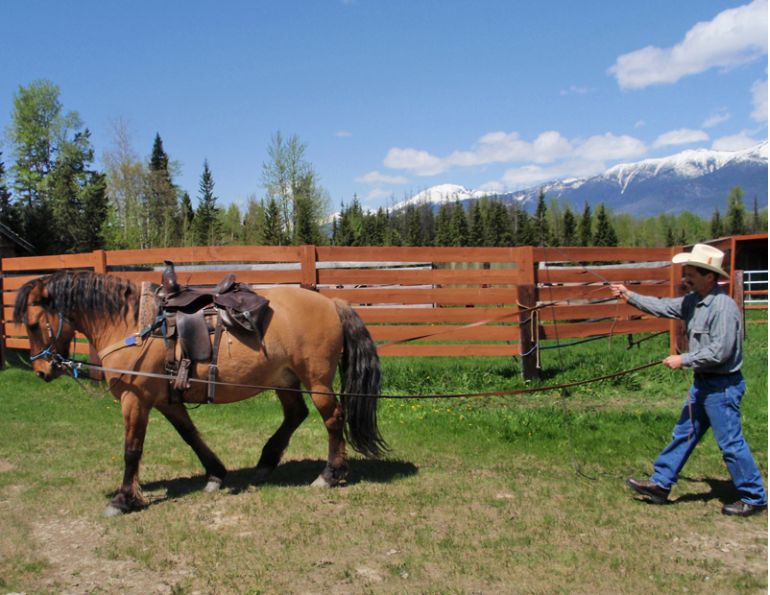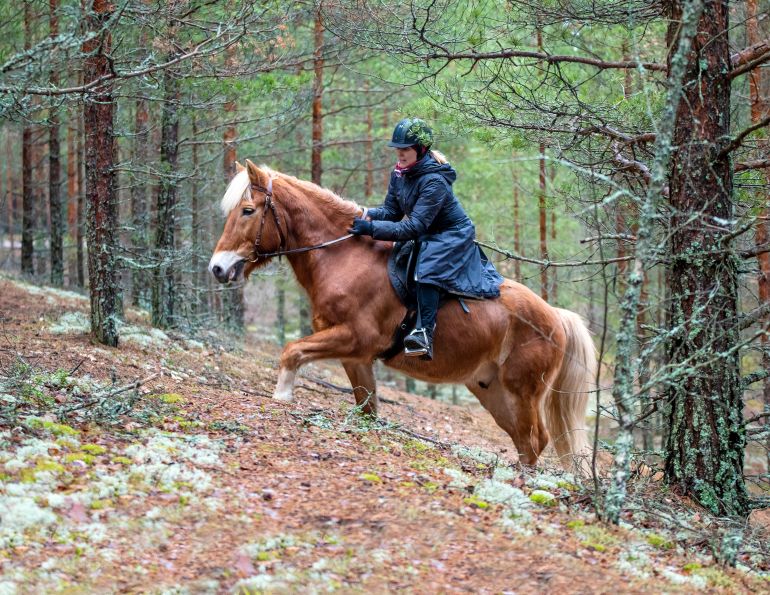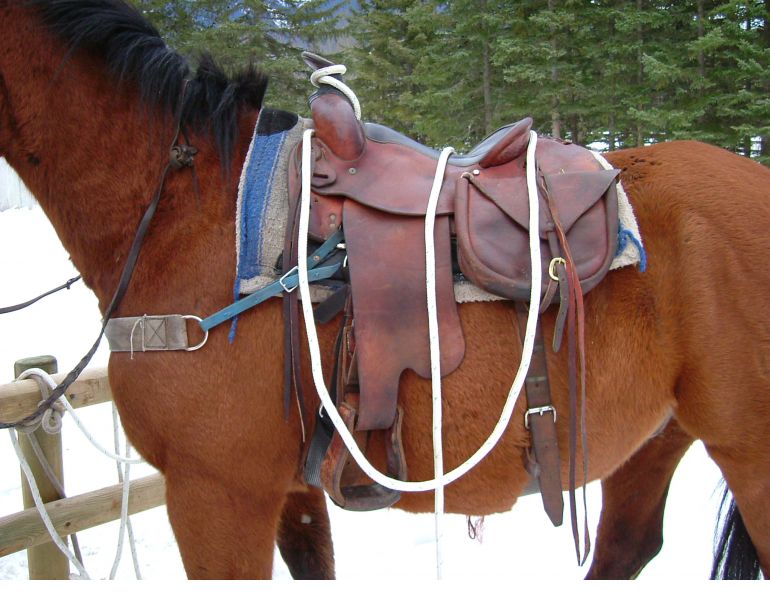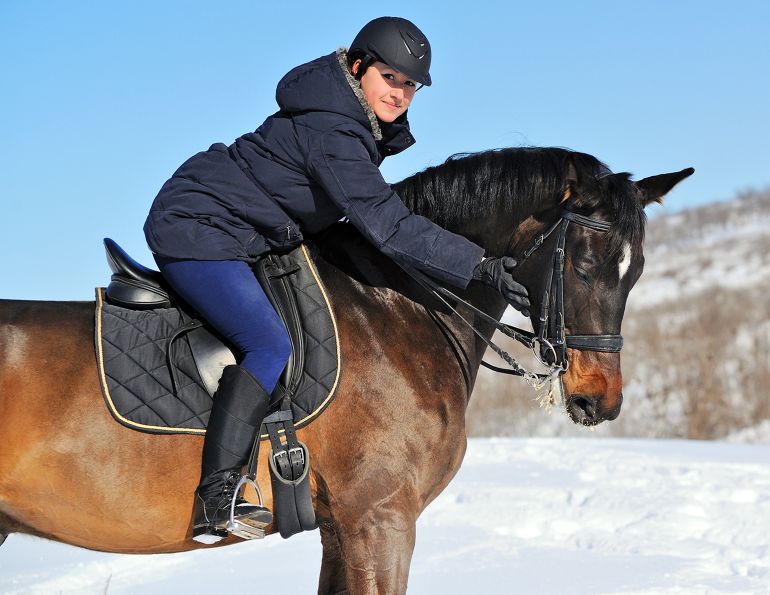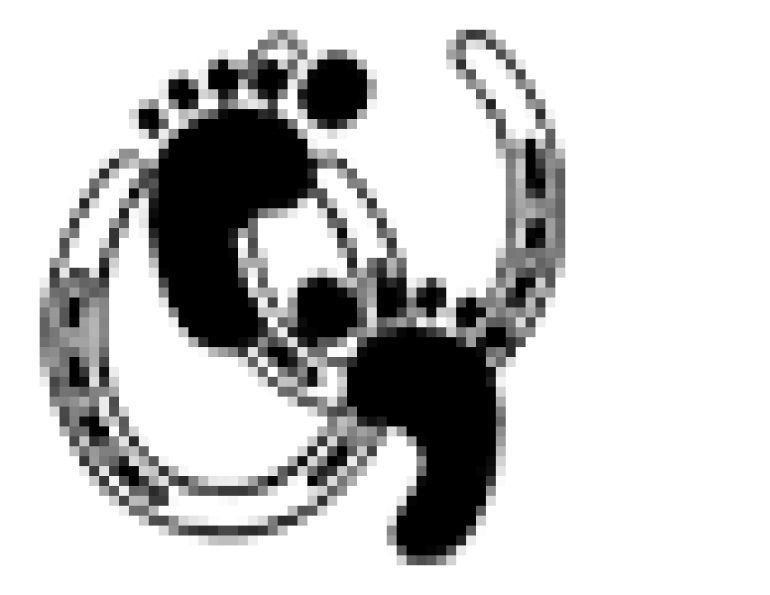By Stan Walchuk, Jr.
In the last article, "The Almighty Foot", I discussed working with horses’ feet and legs; in this article I will look at the physical foot in relation to trail riding.
Most of us, whether we ride or not, look at horses’ feet with some sense of amazement. How can such a big animal get around on such small feet, never mind run, jump, and pound over rocky streams?
The pressure exerted on the sole of the foot by the weight of a standing horse is about 75 pounds per square inch (psi). Because a horse does not travel with weight on all four feet at the same time, the sole pressure is actually well over 100 psi.
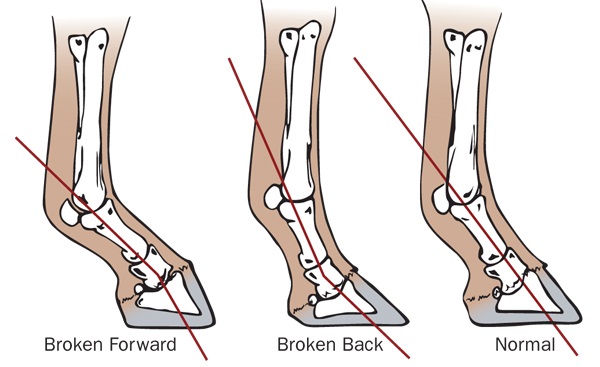
Consider the psi exerted by a jumping horse, or a 1200 pound trail horse on a rocky trail pushing down on the sharp edge of a stone. As a point of interest, a horse’s kick can exert pressure of more than 200 psi, kicking through a half inch OSB (oriented strand board) with little difficulty. Considering that OSB has a fracture strength of 175 to 200 psi, this illustrates how incredibly tough our horses’ feet and legs actually are.
It is a wonder that the pointy coffin bone or third phalanx does not simply penetrate down through the sole, and the fact that the coffin bone is more the shape of a spade when matched against the spade shape of the sole (see Figure 1).
It is also a wonder that the leg and foot do not simply freeze solid in minus 40 degree weather. I remember one Yukon winter morning at minus 65 degrees with a wind chill, when I threw water from a bucket and, literally, it was hard when it hit the ground — not liquid. No kidding. How can that skinny little leg not freeze solid?
A horse’s foot is a miracle, a structural masterpiece whose sole handles well over 100 pounds of pressure per square inch when travelling. Photo: Courtesy of Stan Walchuk, Jr.
The horse’s foot looks simple: a nice, round, smooth hoof on the outside, but in reality, it is a complex arrangement of bone, soft tissue, ligament, tendon, and hoof. It is precisely this toughness — the hardness of the hoof wall and major tendons — that complicates and compounds problems. When internal problems develop there is no give in these structures, no room for swelling within a hoof wall that is rigid with keratin, or for damaged tendons that were pushed beyond their amazing but rigid capacity.
Trail riders might say that the feet of our horses do “punishing” work and this concept of punishment needs to be addressed. For many riders, our horses are also our pets and our friends in the same sense that our dogs and cats are our companions; we would not want to needlessly punish our horse just as we would not want to needlessly punish our dog. I have seen riders reduced to tears from having to ride, or watch their horse walk, over rugged ground, rock, and up and down slopes that they did not anticipate.
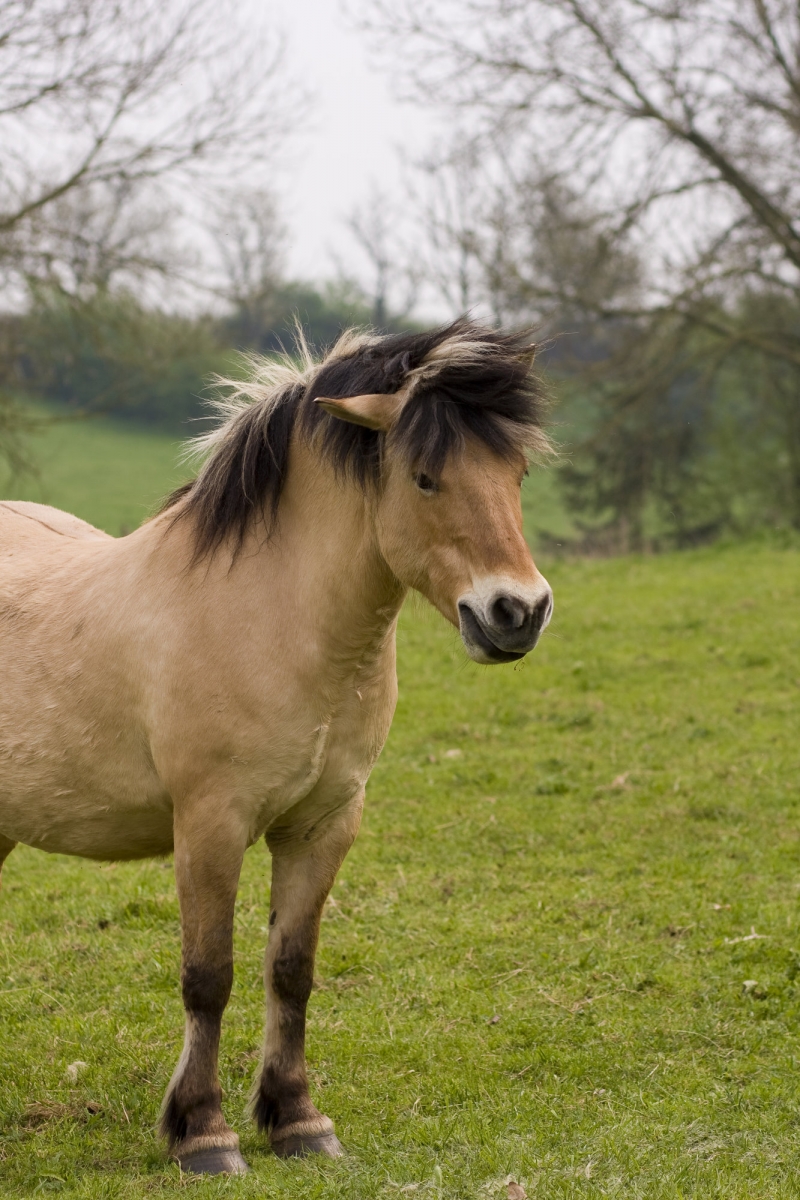
Trail riders should choose a horse with proportionate or large feet for the horse’s body size. Avoid horses with “small foot syndrome.”
This “out of my element” experience can make a horse owner sick with worry, and when the horse comes up lame with a stone bruise or some internal damage, the worry seems well founded.
As trail riders get more experience, they learn that horses’ feet and legs are truly amazing and that a genetically well suited trail foot can take years of varied trail use with absolutely no problems whatsoever. They learn that you would no more expect a 1200 pound horse with a double-zero sized soft foot to carry a 200 pound rider over varied trails than you would expect a Volkswagen Beetle to haul a horse in its trunk.
Veterinarians and farriers often refer to the balance of a horse’s foot. One of the maladies they discuss is “small foot syndrome,” or a hoof that is considered too small for the horse, a situation determined by psi. A horse with a foot sole greater than 78 psi is considered to have small foot syndrome, and one PhD related this situation to heavy, well muscled Quarter Horses.
Over the years, I have had several excellent Quarter Horses on the trail, so we need to be careful about generalizations; however, trail riders do need to avoid the small foot syndrome.
It may take some experience for the average person to identify a genetically sound foot for trail riding, compared with an inferior one. I always expect at minimum a size one horseshoe on a horse that weights 1100 to 1200 pounds.
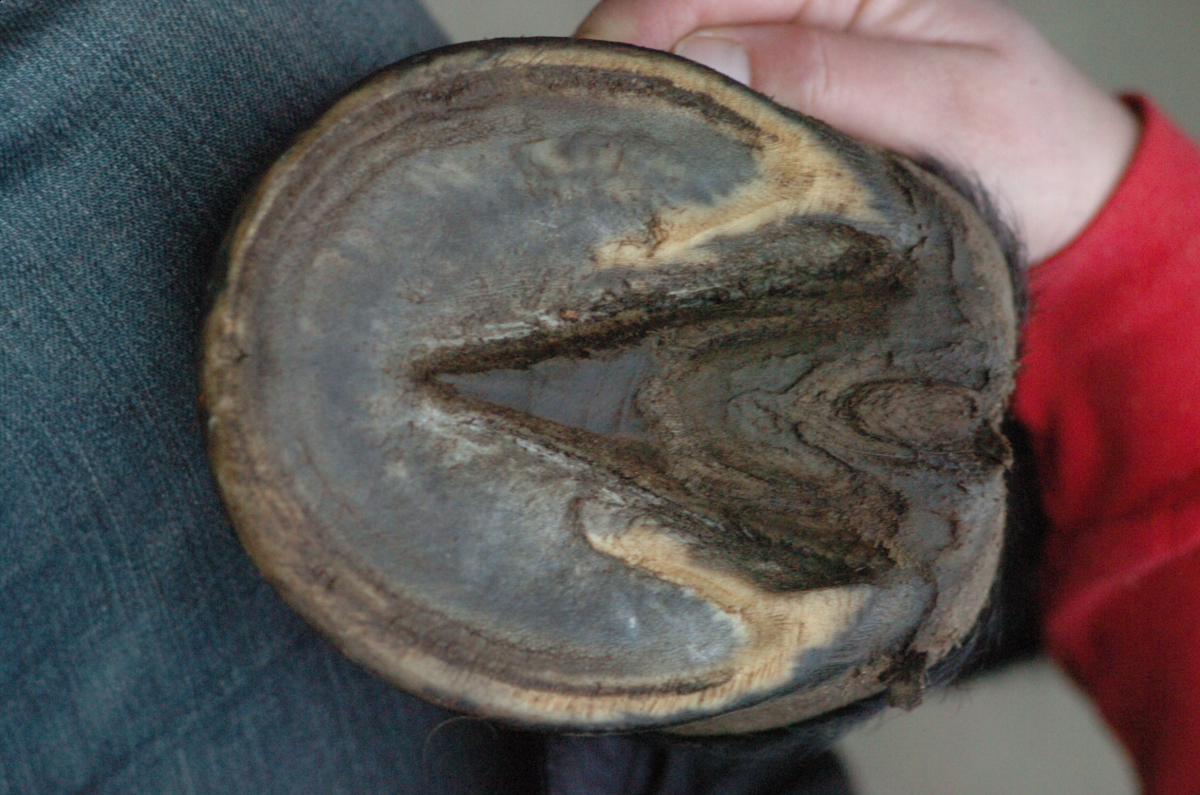
Pick up a potential mount’s hoof and examine the thickness of the hoof wall. Photo: Robin Duncan Photography
I generally avoid hooves with vertical cracks running the full height of the hoof. This is often a sign of a thin hoof wall, although many other factors may be involved.
Lift up the foot and check hoof wall thickness. You will find wide variation, from walls nearly one half inch thick to walls that appear barely an eighth of an inch thick. I usually prefer black feet to white because black feet are generally harder, although some white or striped feet can be surprisingly tough. Before you pass judgement on the relationship of white versus black to the toughness of the hoof wall, take a paring knife and trim down some examples of each. Some white feet peel off like hard butter and some black feet are like iron. Does this really matter for trail riders? Yes, if you are a serious one.
Trail riders learn to expect the unexpected when it comes to rock and debris on the trail. A horse with feet well suited to trail conditions, properly trimmed or shod, can spend his entire life on varied trails without problems. Photo: Courtesy of Stan Walchuk, Jr.
A soft-walled hoof will allow nails to pull through easier, and will often throw a horseshoe in tough trail conditions sooner than a hard-walled hoof. A soft foot with no shoe can be worn down and ruined in a hurry, along with your trip and your enjoyment.
Does going barefoot make the physical foot tougher, whether black or white? Definitely, but do not get too wrapped up in the barefoot versus shod controversy.
Trail riders have the best of both worlds. Many trail riders leave horses unshod for most of the year and when casually riding, and then shoe for long trips on tough trail terrain. The foot of the barefoot horse will toughen up with use but we always shoe horses that have questionable feet when they have a trip or a season coming up. We also shoe horses that are used repeatedly throughout a season. You need to have the common sense and the knowledge from farriers, or the experience to decide when to shoe or go barefoot.
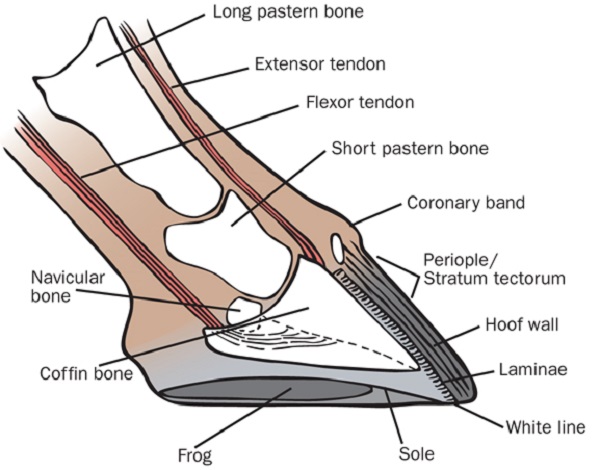
Trail riders should be conscious of proper alignment, front to back, when trimming or shoeing the horse. Basically, the angle through the pastern and hoof should be straight, the hoof should not be angled up, called broken back, or angled down, called broken forward (See Figure 2). This will affect the breakover point of the foot when walking and the balance of the foot, meaning added and reduced pressures on the internal structure of the foot and leg. A straight angle just looks natural, it looks right. I pay more attention to this concept when the horses are being shod and readied for long days of use than I do when they are standing around in the off season.
Shoeing generally increases the grip of a hoof on the trail, however, a barefoot horse, trimmed for trail use, will have more traction than a horse with well worn shoes. A well trimmed bare hoof will have more traction on snow and ice than a shod horse with worn shoes, but a horse shod with frost nails or shoes designed for ice will have more traction than a barefoot horse. Shod horses used in snow will ball up sooner than a barefoot horse, but pads and special shoes can minimize this problem.
Your safest ride on frozen and snow covered ground is with shoes designed for the task and you should consult a farrier for the right approach.
People often compare the feet of wild horses with those of our domesticated horses when explaining a good foot versus a poor foot, and it is a sensible concept. A wild horse that has a poor foot does not survive, which reduces the genetic tendancy to poor feet. A range horse will typically wear down his hoof walls more than a horse kept at a farm or stable. In spite of this, the hoof walls of wild and free range horses still experience excessive growth and often need a trim, so they self trim – the excessive hoof wall trims laterally, breaking off in pieces until the hoof is more or less balanced. Inferior feet that are left untended will often crack vertically — sand cracks from the coronet down to the ground — and not stay solid as they chip off. Most horse owners would not let a foot get to that point, but if a foot does go unattended longer than it should, the way it trims itself will indicate whether it’s a good foot or a poor one, and will give the horse owner some peace of mind if the hoof self trims without serious cracks.
Feeding affects the quality of the horse’s foot. This does not mean that you can take a genetically inferior foot and, with feeding, transform it into a solid, durable foot for the trail. Increasing food volume alone does not improve the hoof, but a horse that is lacking in adequate vitamins, energy, and protein will benefit from supplements, to the point where hoof cracks can be reduced, moisture content and pliability increased, and general hoof health improved. Many supplements have biotin and other additives specifically for hoof improvement.
Hoof growth can be 20 to 30 percent greater in the spring and summer when the horse is on green grasses instead of winter hay. Take a close look at the exterior of your horse’s hoof wall and you will notice lateral ripples like tree rings. These can indicate feeding changes through the seasons, as well as sickness and stress. If I notice a particularly abrupt ripple effect, I can often go back in the horse’s recent history and explain it through one of these events, and hopefully these events were few and far between.
Hoof and leg injuries are always a prime concern for trail riders. Lameness and other injuries are subjects for entire articles in themselves, but I want to impress upon you the reality of good choices when you buy or breed your trail horse. In our herd of 24 horses, which includes broodmares and active trail horses, we had come to expect some hoof, foot, and leg problems over the years. In fact, from about 1982 until about 2000 we could count on always having at least one horse with a foot or leg issue. When you have that many horses, it just happens. In those days we had just about every breed imaginable in our herd. Since that time we have been breeding Morgan, Percheron, and Fjord crosses. You may think this is a tall tale, like hard water hitting the ground, but in the past 12 years I cannot remember one horse with a foot issue, and only one horse with a shoulder strain. When you consider the extended seasonal use of our horses, this is an amazing statistic: no lameness, no founder, no navicular, and no ringbone.
In addition to a thick hoof wall, a trail rider also needs tough internal hoof structure. And it is not all about size; many mules, Arabians and other breeds have a concave look to the bottom of their foot, yet have tough feet and legs.
So, if you want to live a happy life, marry a horse for reasons other than her looks. When you go to buy a horse, wear your cowboy or baseball hat low over your eyes, so low that you can see only the horse’s feet. Don’t look up until you want to buy the horse’s feet, or walk away! Happy trails!
To read more by Stan Walchuk on this site, click here.
Main photo: Whether black or white, choose hooves that are strong, with thick walls and no cracks.





